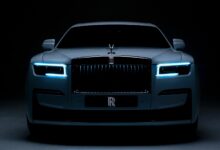The Micro Car That Saved BMW from the Brink of Bankruptcy: BMW Isetta
How BMW Avoided Bankruptcy

Have you heard of the BMW Isetta series? There is an underlying story behind this series of cars. Let’s take a closer look at this story.
 The Micro Car That Saved BMW from the Brink of Bankruptcy: BMW Isetta
The Micro Car That Saved BMW from the Brink of Bankruptcy: BMW Isetta
As a micro car, it is an engineering marvel, although it is not memorable like the vw beetle, mini cooper, fiat 500 or citroen 2cv. It has not had the chance to be reproduced like the retro cars listed above. The car was 3 wheeler. There was only one wheel at the back. The only entrance was through the side-opening door in the front of the car, which carried the headlights on it. The BMW isetta, which can be purchased for approximately 1300 euros in today’s money, sold 161,728 units during the period of its production. The bmw isetta is a candy car with a very different front door concept, which was produced after the Second World War in order to be both cost effective and economical to facilitate close distance transportation. With its great sales success, it saved BMW, which had a very difficult period after the war, from the brink of bankruptcy. Also, a nuclear family could fit in this car. At least, there is visual material in that direction on the posters of that period. However, the fact that it is the first example of bubble car modeling has enabled the mini cars produced after it to be given this name.
Who is Isetta?
The BMW Isetta is a microcar produced by the German automaker BMW from 1955 to 1962. The Isetta was designed as a cheap and efficient mode of transportation for post-war Europe and was one of the most popular microcars of the 1950s and 60s. .
The BMW Isetta was famous for its unique egg-shaped body made of reinforced plastic and which could be opened from the entire front of the car.
Despite its small size, the Isetta was surprisingly spacious inside and could comfortably seat two people. Its single-cylinder engine was located at the rear of the car and could reach speeds of up to 50 miles per hour.
The BMW Isetta has been sold in many countries around the world and has become a huge success for BMW, especially in the United States.
Today, the BMW Isetta is considered a classic and a collector’s item, and remains popular with car enthusiasts and car collectors. Many original Isettas have been restored and are still used on the roads, while others are preserved in museums and collections as a reminder of the unique and innovative design that characterized the 1950s and 60s.
 Who designed the BMW Isetta?
Who designed the BMW Isetta?
The BMW Isetta was designed by Italian automobile engineer and industrial designer Renzo Rivolta. He was the founder of the company Iso SpA, which manufactures the Isetta and other small vehicles. BMW then licensed the design and produced its own version of the Isetta, which became one of its most popular models in the 1950s.
BMW needed a new model that didn’t cost much to develop. He found the solution at the 1954 Turin Auto Show. At the booth of the Italian manufacturer Iso Rivolta, which produces refrigerators and mini cars, was a three-wheeled car with a large door resembling a refrigerator in the front. Her name was Iso Isetta. BMW representatives also bought Isetta’s license and production equipment
Born in Italy, raised in Germany
BMW first made the necessary improvements to the engine and chassis of the car. Even after it was modified by BMW developers accustomed to designing performance cars, the car’s specifications looked rather modest.
On the bestseller list
BMW’s marketing department coined the term “motocoupé” for the Isetta. Known as the “Knutschkugel” (hugging car) in Germany, the Isetta was very popular. There was no better car for city driving or short distance driving. Being 2.28 m long and weighing only 350 kg, it was more maneuverable than any other car. Just like in a “normal” car, two adults could sit side by side. The Isetta was the only microcar that made this possible.
Getting on and off was pretty easy, as the door swings forward and the steering wheel and steering shaft move with it. The trunk was placed on the rear-mounted luggage rack, meaning it was outside the car.
Even today the BMW Isetta has retained nothing of its former charm and still represents a certain lifestyle. “The most popular piece on display at the BMW Welt in Munich is the Isetta,” says Klinger-Köhnlein. We recommend you to visit BMW Welt in Munich to experience the nostalgia of the 50s and meet Isetta.
Not many additional changes were made to the Isetta during the production processes. The first series had a larger rear window compared to the second, and the side-opening window was replaced with a sliding glass. All Isettas had a canvas roof similar to today’s sunroof. BMW Group Classic Specialist Klinger-Köhnlein states that this is not due to the customer’s request, adding that the main reason is that an emergency exit is mandatory because the car is getting in through the front door.

 The Micro Car That Saved BMW from the Brink of Bankruptcy: BMW Isetta
The Micro Car That Saved BMW from the Brink of Bankruptcy: BMW Isetta
 Who designed the BMW Isetta?
Who designed the BMW Isetta?



